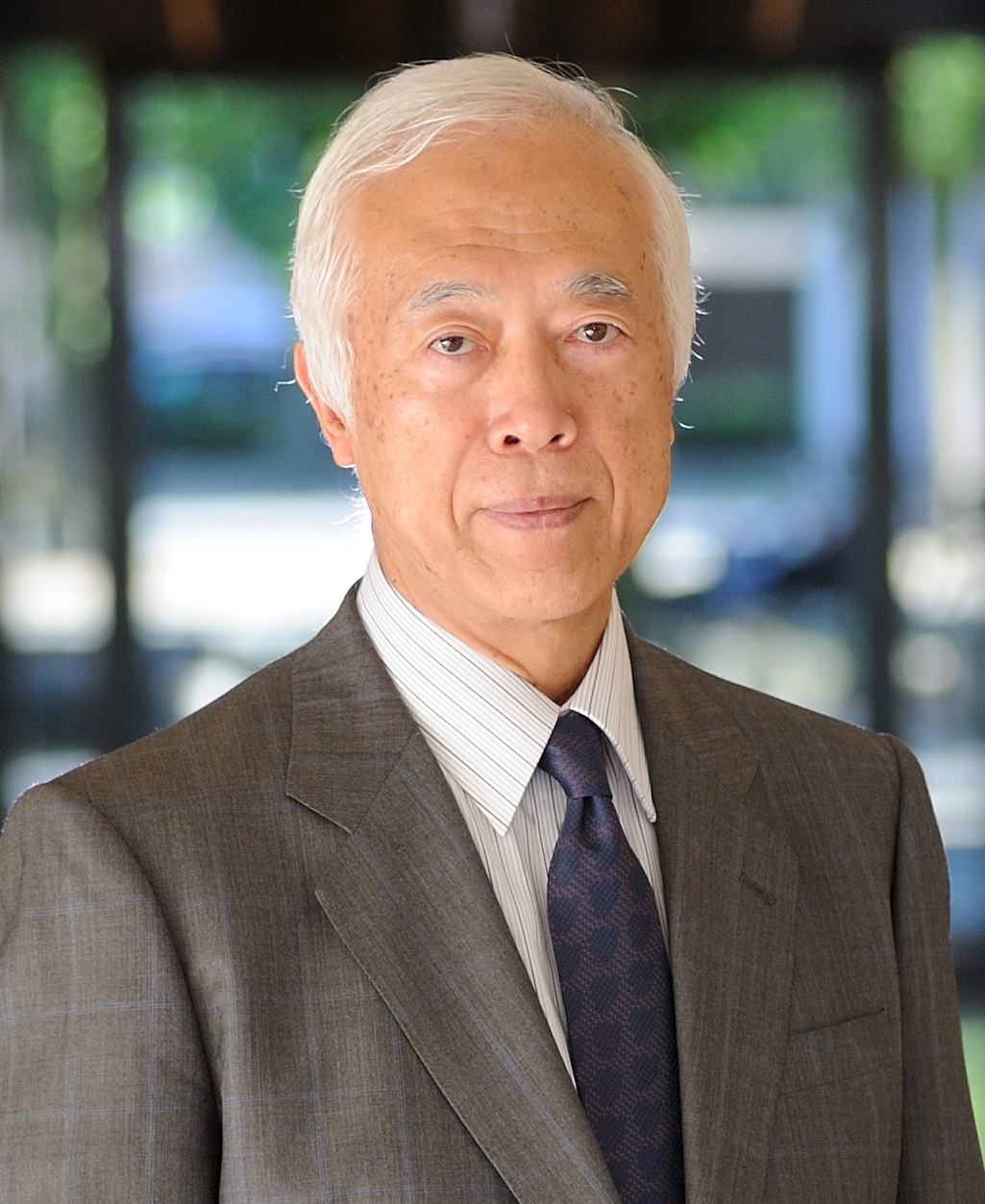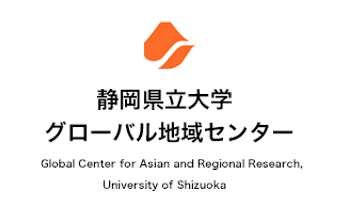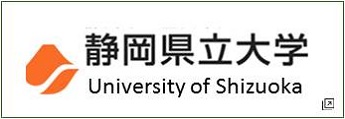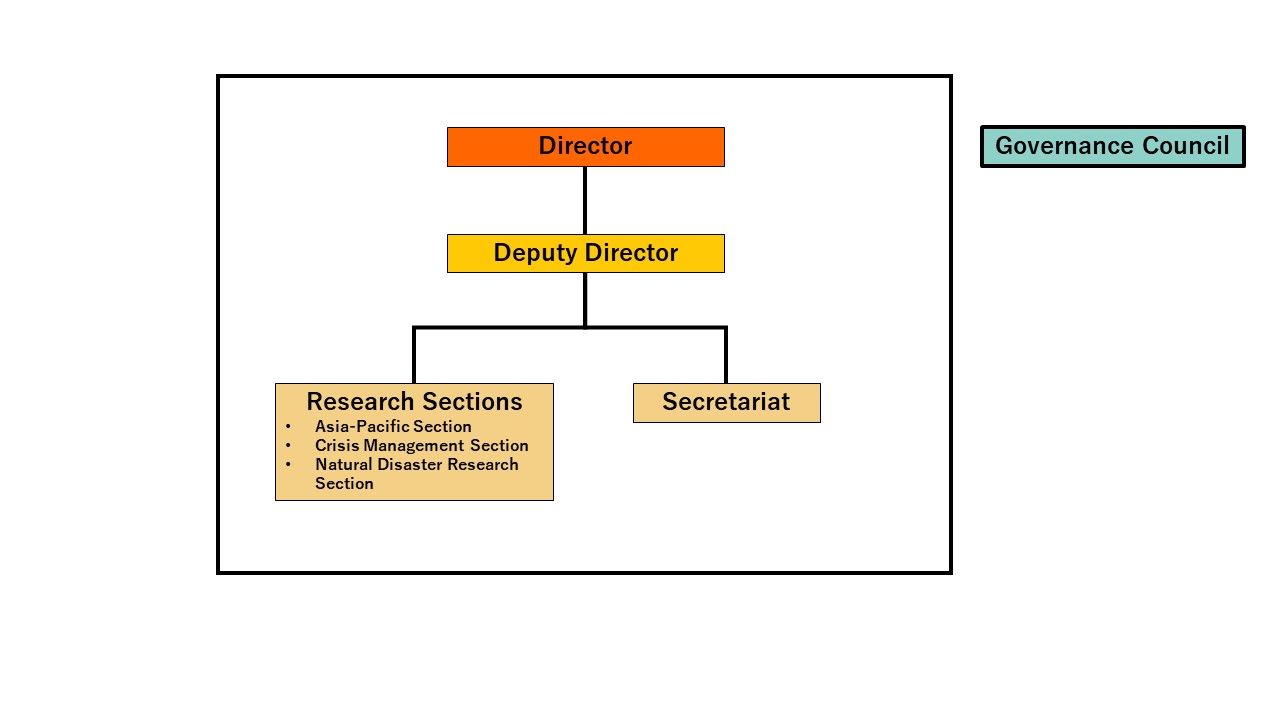English
About the Center
Message from the Director

The late Professor Hiroshi Takeuchi served as the Director of the Global Center for Asian and Regional Research since its foundation at the University of Shizuoka, where it was tasked with examining new possibilities for the region with a global perspective. Professor Takeuchi dedicated his attention to the ever-changing Asian region, and gave special value to exchange between Asia and Japan, and Asia and Shizuoka. The Global Center hopes to continue to serve its role and use the same outlook to guide its activities. That is to say that we believe that the years of dedicated administration of the Shizuoka Research Institute by Professor Takeuchi, and the strong bonds established so far through a wide range of activities with companies, municipalities, universities, and regional societies at home and abroad, are both invaluable assets to the Global Center, and we would be honored to continue to receive the assistance and guidance of our partners.
We should give renewed focus to the two serious issues confronting Japan into which Professor Takeuchi had a penetrating insight: namely that Asia is at a major turning point, and that Japan is at the onset of a period frequent major earthquakes – both warning signs of major change. For example, one can point out that 1) Asia has entered an era of military expansion; 2) although the countries of Southeast Asia continue to grow, and now constitute a huge market, complex minority ethnic issues persist, and both China and India are exercising influence on the region; and 3) Asia is home to three of the largest Muslim-majority countries in the world, Indonesia, Pakistan, and Bangladesh, while India also has a huge Muslim population, and many different conflicts have broken out with religious factors in the background. We hope that renewed attention will be given to Professor Takeuchi’s analysis that post-war American-style democracy no longer has much currency in the region.
In addition to the above, there is the new ongoing global problem that over 65 million refugees have emerged as a result of regional conflicts, posing a major challenge for the world of the near future. One could say that regional disparities are occurring on a global scale.
However, to look at this kind of ongoing globalization from a different perspective, one can also take the view that it is a sign that new “regions” are emerging on various levels throughout Japan, Asia, and the rest of the world, and they are initiating unprecedented, diverse relationships with other regions. It is possible that these newly-emerging “regions” will become the subject of international regional alliances across borders, and “local areas” positioned below regions on the hierarchy may even directly work on global issues. Furthermore, one can say that this form of globalization is a historic dynamic force that is on the verge of reforming the regional relationships to date, while bringing in maritime regional spaces, to create new, multilateral links between regions, and also that the traditional form of “nations,” once the sole form of identification in historic spaces since the 19th century, is also facing imminent change.
The Global Center for Asian and Regional Research at the University of Shizuoka intends to build on its work to date in a deeper, more diverse manner, while retaining the perspective of the region of Shizuoka, in order to grapple with the issues of Asian socioeconomics and Japanese natural disasters and risk management, which are occurring amid the dramatic changes in the world resulting from globalization. We hope that you will support us in our efforts.
HAMASHITA Takeshi
Director
Global Center for Asian and Regional Research
Uuiversity of Shizuoka
We should give renewed focus to the two serious issues confronting Japan into which Professor Takeuchi had a penetrating insight: namely that Asia is at a major turning point, and that Japan is at the onset of a period frequent major earthquakes – both warning signs of major change. For example, one can point out that 1) Asia has entered an era of military expansion; 2) although the countries of Southeast Asia continue to grow, and now constitute a huge market, complex minority ethnic issues persist, and both China and India are exercising influence on the region; and 3) Asia is home to three of the largest Muslim-majority countries in the world, Indonesia, Pakistan, and Bangladesh, while India also has a huge Muslim population, and many different conflicts have broken out with religious factors in the background. We hope that renewed attention will be given to Professor Takeuchi’s analysis that post-war American-style democracy no longer has much currency in the region.
In addition to the above, there is the new ongoing global problem that over 65 million refugees have emerged as a result of regional conflicts, posing a major challenge for the world of the near future. One could say that regional disparities are occurring on a global scale.
However, to look at this kind of ongoing globalization from a different perspective, one can also take the view that it is a sign that new “regions” are emerging on various levels throughout Japan, Asia, and the rest of the world, and they are initiating unprecedented, diverse relationships with other regions. It is possible that these newly-emerging “regions” will become the subject of international regional alliances across borders, and “local areas” positioned below regions on the hierarchy may even directly work on global issues. Furthermore, one can say that this form of globalization is a historic dynamic force that is on the verge of reforming the regional relationships to date, while bringing in maritime regional spaces, to create new, multilateral links between regions, and also that the traditional form of “nations,” once the sole form of identification in historic spaces since the 19th century, is also facing imminent change.
The Global Center for Asian and Regional Research at the University of Shizuoka intends to build on its work to date in a deeper, more diverse manner, while retaining the perspective of the region of Shizuoka, in order to grapple with the issues of Asian socioeconomics and Japanese natural disasters and risk management, which are occurring amid the dramatic changes in the world resulting from globalization. We hope that you will support us in our efforts.
HAMASHITA Takeshi
Director
Global Center for Asian and Regional Research
Uuiversity of Shizuoka
Location
Global Center for Asian and Regional Research, University of Shizuoka
3-6-1,Takajo, Aoi-Ku, Shizuoka-City, Shizuoka Prefecture, 420-0839, Japan
Tel: +81-54-245-5600 Fax: +81-54-245-5603
E-mail: glc@u-shizuoka-ken.ac.jp
3-6-1,Takajo, Aoi-Ku, Shizuoka-City, Shizuoka Prefecture, 420-0839, Japan
Tel: +81-54-245-5600 Fax: +81-54-245-5603
E-mail: glc@u-shizuoka-ken.ac.jp
Research Staff
Director
HAMASHITA Takeshi, Project Professor
Deputy Director
TOMIZAWA Hisao, Vice President & Project Professor, School of International Relations
Research Sections
1. Asia-Pacific Section (political, economic, and social affairs)
In this Section, we deepen human exchanges with countries in Asia, broaden the scope of joint research with partners in Japan and abroad, and examine the political, economic, and cultural backgrounds of this region, as well as relationships between nations and other topics.
Research is currently in progress in the following three areas.
The first is research titled “Construction of Global Networks in 21st-Century Asia and the New Role of Shizuoka Prefecture,” which focuses on capturing Shizuoka’s regional characteristics globally, as well as research on themes such as the inheritance of regional networks with Asia and nurturing the next generation.
The second is research that analyzes the policies promoted by China, clarifies the actual circumstances and actual situation, and explores the impact on the international community, including Japan, and strategies for the Shizuoka region.
The third is research titled “Research on the Diversity of Consumer Behavior in Asia,” focusing on the Halal industry and Muslim consumer behavior.
We will continue to advance research that assists in understanding Asian societies from the perspective of the Shizuoka region.
1-(1) Asia Global Network Study Group (Phase III)
At the Global Center for Asian and Regional Research, University of Shizuoka, at the request of Shizuoka Prefecture, we have been promoting research on the theme “Construction of Global Networks in 21st-Century Asia and the New Role of Shizuoka Prefecture” since FY2018, focusing on the formation of diverse inter-Asian networks and the role Shizuoka Prefecture should play. Phase I (from 2018) focused on China’s Belt and Road Initiative, and pursued research based on the achievements of the friendship partnership (inter-regional exchange) between Shizuoka Prefecture and Zhejiang Province. Phase II (from FY2021) is advancing research to capture the direction of exchanges through industry and culture in the Asian region and the formation of networks in the maritime sphere. Phase III will build on the findings obtained in Phase II and continue our research for three years with the following basic themes.
Phase III: Basic Research Themes
(1) Port city networks in East Asia and Northeast Asia
(2) “Maritime Shizuoka” viewed from various perspectives
(3) Intergenerational networks: Inheritance of regional networks linking Shizuoka and Asia and nurturing the next generation
【team leader】
HAMASHITA Takeshi, Director
【Researchers】TOMIZAWA Hisao, Deputy Director YOKOI Kaori, Project Associate Professor AWAKURA Daisuke, Project Assistant Professor Visiting Scholar
1-(2) Comparative study of asset bubbles and the collapse of bubble economies in Japan and China
The real estate bubble in China has collapsed, and the Chinese economy has already been affected by the collapse of the bubble and is entering a period of deflation. The unemployment rate among young people is soaring, and consumption is weakening. The reason for this is that domestic demand has weakened due to the collapse of the bubble economy. Will China experience 30 lost years like Japan? If the Chinese market continues to shrink like this, it is expected to have a serious impact on Japan’s economy and Japanese companies.
The purpose of this research is to examine the mechanism of the collapse of Japan’s asset bubble 30 years ago and to foresee the macroeconomic impact due to the collapse of the bubble economy that will occur in China in the future. At the same time, we will suggest strategies for Japanese companies to develop their business in China.
【team leader】
KE Long, Project Professor
1-(3) China’s policies of common prosperity and the economic policies of Xi Jinping’s third term (2022–2023)
As he enters his third term in office, how will Xi Jinping fulfill his public commitment to common prosperity? Based on this awareness of the issues, this research group aims to explore the future direction of Chinese politics and its economy and society.
【team leader】
KE Long, Project Professor
1-(4) Interdisciplinary research on the history of Shimizu Port.(2018-2023)
[Research content]
We will uncover diverse “knowledge”, covering economics, society and culture, by carrying out regional and local research, collecting materials, and exchanging opinions about Shimizu Port, which has a long history as a shipping and distribution base in Japan. We will collect this knowledge and pass it on to future generations.
[Team Leader]
HAMASHITA Takeshi, Project Professor
[Researchers]
1-(5) Research on China’s “One Belt, One Road” project and the reconstruction of global supply chains.(2019-2022)
[Research content]
As well as shedding light on the actual conditions and facts surrounding the “One Belt, One Road” project being promoted by China, in view of the international political situation, including the trade war between the United States and China, we will investigate the challenges faced in constructing new global supply chains, and look ahead to the future.
[Team Leader]
KE Long, Project Professor
[Researchers]
1-(6) Research on consumer needs/behavior in Asia
[Research content]
This Section conducts research on the diversification of consumer needs/behavior in Asia and on social/cultural background factors, and develops global human resources by having younger researchers participate in these research efforts.
[Team Leader]
HAMASHITA Takeshi, Project Professor
[Researchers]
1-(7) Research and study of China’s social security system(2017~2019)
[Research content]
In China today, the birthrate is declining rapidly while the population continues to age, and it is believed that the social security system is not adequately equipped and poses a grave risk of inviting a slowdown in the economy and unrest in society in the future. This Section looks at subjects such as the current conditions, issues, and future trajectory of China’s social security system by considering the social security system of Japan, which entered a period of declining birthrate paired with an aging population before China.
[Team Leader]
KE Long, Project Professor
[Researchers]
1-(8) Research into environmental problems in China (2014 – 2017)
[Research content]
In addition to getting a clear grasp of subjects such as the current state and origins of environmental problems in China, which have major effects both in China and abroad, this Section also suggests specific solutions based on the pollution problems previously experienced by Japan and the measures taken against these.
[Team Leader]
KE Long, Project Professor
[Researchers]
1-(9) Research on China’s automotive industry and industrial policy(2012 – 2015)
[Research content]
We will put China’s economic, industrial, and policy trends as well as Sino-Japanese economic relations into perspective through research focused on China’s automotive industry.
[Team Leader]
KE Long, Project Professor
[Researchers]
1-(10) Research into the relationship between religion and economics(2012 – 2016)
[Research content]
This Section investigates the relationship between religion and economics to get a view of the future of the Japanese economy.
[Researchers]
TAKEUCHI Hiroshi,Previous Director (deceased)
In this Section, we deepen human exchanges with countries in Asia, broaden the scope of joint research with partners in Japan and abroad, and examine the political, economic, and cultural backgrounds of this region, as well as relationships between nations and other topics.
Research is currently in progress in the following three areas.
The first is research titled “Construction of Global Networks in 21st-Century Asia and the New Role of Shizuoka Prefecture,” which focuses on capturing Shizuoka’s regional characteristics globally, as well as research on themes such as the inheritance of regional networks with Asia and nurturing the next generation.
The second is research that analyzes the policies promoted by China, clarifies the actual circumstances and actual situation, and explores the impact on the international community, including Japan, and strategies for the Shizuoka region.
The third is research titled “Research on the Diversity of Consumer Behavior in Asia,” focusing on the Halal industry and Muslim consumer behavior.
We will continue to advance research that assists in understanding Asian societies from the perspective of the Shizuoka region.
1-(1) Asia Global Network Study Group (Phase III)
At the Global Center for Asian and Regional Research, University of Shizuoka, at the request of Shizuoka Prefecture, we have been promoting research on the theme “Construction of Global Networks in 21st-Century Asia and the New Role of Shizuoka Prefecture” since FY2018, focusing on the formation of diverse inter-Asian networks and the role Shizuoka Prefecture should play. Phase I (from 2018) focused on China’s Belt and Road Initiative, and pursued research based on the achievements of the friendship partnership (inter-regional exchange) between Shizuoka Prefecture and Zhejiang Province. Phase II (from FY2021) is advancing research to capture the direction of exchanges through industry and culture in the Asian region and the formation of networks in the maritime sphere. Phase III will build on the findings obtained in Phase II and continue our research for three years with the following basic themes.
Phase III: Basic Research Themes
(1) Port city networks in East Asia and Northeast Asia
(2) “Maritime Shizuoka” viewed from various perspectives
(3) Intergenerational networks: Inheritance of regional networks linking Shizuoka and Asia and nurturing the next generation
【team leader】
HAMASHITA Takeshi, Director
【Researchers】
1-(2) Comparative study of asset bubbles and the collapse of bubble economies in Japan and China
The real estate bubble in China has collapsed, and the Chinese economy has already been affected by the collapse of the bubble and is entering a period of deflation. The unemployment rate among young people is soaring, and consumption is weakening. The reason for this is that domestic demand has weakened due to the collapse of the bubble economy. Will China experience 30 lost years like Japan? If the Chinese market continues to shrink like this, it is expected to have a serious impact on Japan’s economy and Japanese companies.
The purpose of this research is to examine the mechanism of the collapse of Japan’s asset bubble 30 years ago and to foresee the macroeconomic impact due to the collapse of the bubble economy that will occur in China in the future. At the same time, we will suggest strategies for Japanese companies to develop their business in China.
【team leader】
KE Long, Project Professor
1-(3) China’s policies of common prosperity and the economic policies of Xi Jinping’s third term (2022–2023)
As he enters his third term in office, how will Xi Jinping fulfill his public commitment to common prosperity? Based on this awareness of the issues, this research group aims to explore the future direction of Chinese politics and its economy and society.
【team leader】
KE Long, Project Professor
1-(4) Interdisciplinary research on the history of Shimizu Port.(2018-2023)
[Research content]
We will uncover diverse “knowledge”, covering economics, society and culture, by carrying out regional and local research, collecting materials, and exchanging opinions about Shimizu Port, which has a long history as a shipping and distribution base in Japan. We will collect this knowledge and pass it on to future generations.
[Team Leader]
HAMASHITA Takeshi, Project Professor
[Researchers]
- AWAKURA Daisuke, Project Assistant Professor
- Visiting Scholar
1-(5) Research on China’s “One Belt, One Road” project and the reconstruction of global supply chains.(2019-2022)
[Research content]
As well as shedding light on the actual conditions and facts surrounding the “One Belt, One Road” project being promoted by China, in view of the international political situation, including the trade war between the United States and China, we will investigate the challenges faced in constructing new global supply chains, and look ahead to the future.
[Team Leader]
KE Long, Project Professor
[Researchers]
- TOMIZAWA Hisao, Vice President & Project Professor, School of International Relations
- TAKESHITA Seijio, Professor
- Visiting Scholar
1-(6) Research on consumer needs/behavior in Asia
[Research content]
This Section conducts research on the diversification of consumer needs/behavior in Asia and on social/cultural background factors, and develops global human resources by having younger researchers participate in these research efforts.
[Team Leader]
HAMASHITA Takeshi, Project Professor
[Researchers]
- TOMIZAWA Hisao, Vice President & Project Professor, School of International Relations
- NAGURA Kyoko, Professor
1-(7) Research and study of China’s social security system(2017~2019)
[Research content]
In China today, the birthrate is declining rapidly while the population continues to age, and it is believed that the social security system is not adequately equipped and poses a grave risk of inviting a slowdown in the economy and unrest in society in the future. This Section looks at subjects such as the current conditions, issues, and future trajectory of China’s social security system by considering the social security system of Japan, which entered a period of declining birthrate paired with an aging population before China.
[Team Leader]
KE Long, Project Professor
[Researchers]
- HIGASHINO Sadanori,Project Professor
- AMANO Yukari, Assistant Professor
- Visiting Scholar
1-(8) Research into environmental problems in China (2014 – 2017)
[Research content]
In addition to getting a clear grasp of subjects such as the current state and origins of environmental problems in China, which have major effects both in China and abroad, this Section also suggests specific solutions based on the pollution problems previously experienced by Japan and the measures taken against these.
[Team Leader]
KE Long, Project Professor
[Researchers]
- SAKATA Masahiro, Professor
- AMAGAI kashi, Professor
- YOON Daeyoung, Professor
- Visiting Scholar
1-(9) Research on China’s automotive industry and industrial policy(2012 – 2015)
[Research content]
We will put China’s economic, industrial, and policy trends as well as Sino-Japanese economic relations into perspective through research focused on China’s automotive industry.
[Team Leader]
KE Long, Project Professor
[Researchers]
- NISHINO Katsuaki, Professor
- YOON Daeyoung, Professor
- MIYAZAKI Kunio,Associate Professor
- Visiting Scholar
1-(10) Research into the relationship between religion and economics(2012 – 2016)
[Research content]
This Section investigates the relationship between religion and economics to get a view of the future of the Japanese economy.
[Researchers]
TAKEUCHI Hiroshi,Previous Director (deceased)
2. Crisis Management Section
[Research content]
This Section conducts surveys/research on the establishment of crisis management regimes for earthquakes and other natural disasters as well as nuclear power plant incidents, a pressing issue for Shizuoka Prefecture.
Shizuoka Prefecture not only faces the Nankai Trough but also hosts the Hamaoka Nuclear Power Plant, the Tokaido Shinkansen, which is Japan’s main artery, and the Tomei and Shin-Tomei Expressways, thus making the development of disaster prevention and crisis management systems an urgent issue. Preparing for an eruption of Mt. Fuji is also an important theme. The Crisis Management Section is engaged in research, proposals, and verifications to build a system that can be accepted anywhere in the world, with the national government, prefecture, and municipalities working together to achieve the world’s safest “Fujinokuni” (Land of Fuji).
In the Great East Japan Earthquake, gaps in response capabilities between municipalities became apparent from the initial stages. This Section proposed a plan to enhance the crisis management capabilities of governments based on lessons learned from the disaster-affected prefectures. The system of the Shizuoka Prefectural Government was reformed from both organizational and personnel aspects, and the Crisis Management Section was reorganized as the lead section.
Under the Governor’s directive to improve the education and training of crisis management personnel in Shizuoka Prefecture, research was conducted to build Japan’s first international-standard crisis management personnel training facility within the prefecture. Subsequently, we have been conducting research on education and training in fields that require only a limited budget for facility maintenance and there is a high possibility of being able to receive training from local governments and companies. This includes aviation coordination by ground staff on the receiving side to make use of the capabilities of helicopters that fly in from all over Japan for rescue, information gathering, transportation, etc., during a major disaster.
In addition, to enhance the ability to verify journalism related to disaster prevention, crisis management, and security, we are offering a public journalism course at the University of Shizuoka.
[Administrator]
OGAWA Kazuhisa, Project Professor
[Researcher]
NISHI Takayuki, Project Associate Professor
[Research content]
This Section conducts surveys/research on the establishment of crisis management regimes for earthquakes and other natural disasters as well as nuclear power plant incidents, a pressing issue for Shizuoka Prefecture.
Shizuoka Prefecture not only faces the Nankai Trough but also hosts the Hamaoka Nuclear Power Plant, the Tokaido Shinkansen, which is Japan’s main artery, and the Tomei and Shin-Tomei Expressways, thus making the development of disaster prevention and crisis management systems an urgent issue. Preparing for an eruption of Mt. Fuji is also an important theme. The Crisis Management Section is engaged in research, proposals, and verifications to build a system that can be accepted anywhere in the world, with the national government, prefecture, and municipalities working together to achieve the world’s safest “Fujinokuni” (Land of Fuji).
In the Great East Japan Earthquake, gaps in response capabilities between municipalities became apparent from the initial stages. This Section proposed a plan to enhance the crisis management capabilities of governments based on lessons learned from the disaster-affected prefectures. The system of the Shizuoka Prefectural Government was reformed from both organizational and personnel aspects, and the Crisis Management Section was reorganized as the lead section.
Under the Governor’s directive to improve the education and training of crisis management personnel in Shizuoka Prefecture, research was conducted to build Japan’s first international-standard crisis management personnel training facility within the prefecture. Subsequently, we have been conducting research on education and training in fields that require only a limited budget for facility maintenance and there is a high possibility of being able to receive training from local governments and companies. This includes aviation coordination by ground staff on the receiving side to make use of the capabilities of helicopters that fly in from all over Japan for rescue, information gathering, transportation, etc., during a major disaster.
In addition, to enhance the ability to verify journalism related to disaster prevention, crisis management, and security, we are offering a public journalism course at the University of Shizuoka.
[Administrator]
OGAWA Kazuhisa, Project Professor
[Researcher]
NISHI Takayuki, Project Associate Professor
3. Natural Disaster Research Section
[Research content]
The Earthquake Prediction Research Section, established in FY2016 at the request of Shizuoka Prefecture, was reorganized into the Natural Disaster Research Section starting in FY2022. It has been reborn as an organization that not only researches earthquakes but also studies various natural disasters such as tsunamis, volcanoes, and storm and flood damage, and disseminates information to the residents of the prefecture in a more understandable way than ever before.
The activities of this Section have two main pillars.
The first pillar is research into natural disasters such as earthquakes, tsunamis, volcanoes, and storm and flood damage, utilizing the locational advantages of the prefecture and covering all of Shizuoka Prefecture’s natural features, from the high mountains of Mt. Fuji and the Southern Alps to the deep sea of Suruga Bay.
The second pillar is to present the research results at lectures and other events and to disseminate the various data and information related to disasters held by the Japan Meteorological Agency and research institutions, thereby contributing to raising disaster prevention awareness among residents of the prefecture. With these efforts, we provide an academic foundation to protect the safety of the prefecture’s residents.
The SDGs (Sustainable Development Goals) include “14. Life Below Water” and “15. Life on Land.” It is important to live with a renewed awareness of the sea and land as part of our environment, to deeply understand nature and make use of its characteristics, and also to prepare for natural disasters. To build a society that will “leave no one behind,” which is a major issue of the SDGs, we need to pursue environmental conditions in which everyone can live safely and securely. In this Section, we will take on the challenge of research that has been difficult to solve so far and aim to make a game-changing contribution toward a society that will “leave no one behind” in the true sense.
[Researcher]
[Research content]
The Earthquake Prediction Research Section, established in FY2016 at the request of Shizuoka Prefecture, was reorganized into the Natural Disaster Research Section starting in FY2022. It has been reborn as an organization that not only researches earthquakes but also studies various natural disasters such as tsunamis, volcanoes, and storm and flood damage, and disseminates information to the residents of the prefecture in a more understandable way than ever before.
The activities of this Section have two main pillars.
The first pillar is research into natural disasters such as earthquakes, tsunamis, volcanoes, and storm and flood damage, utilizing the locational advantages of the prefecture and covering all of Shizuoka Prefecture’s natural features, from the high mountains of Mt. Fuji and the Southern Alps to the deep sea of Suruga Bay.
The second pillar is to present the research results at lectures and other events and to disseminate the various data and information related to disasters held by the Japan Meteorological Agency and research institutions, thereby contributing to raising disaster prevention awareness among residents of the prefecture. With these efforts, we provide an academic foundation to protect the safety of the prefecture’s residents.
The SDGs (Sustainable Development Goals) include “14. Life Below Water” and “15. Life on Land.” It is important to live with a renewed awareness of the sea and land as part of our environment, to deeply understand nature and make use of its characteristics, and also to prepare for natural disasters. To build a society that will “leave no one behind,” which is a major issue of the SDGs, we need to pursue environmental conditions in which everyone can live safely and securely. In this Section, we will take on the challenge of research that has been difficult to solve so far and aim to make a game-changing contribution toward a society that will “leave no one behind” in the true sense.
[Researcher]
- SAKAI, Satoshi, Project Professor
- KAMOGAWA Masashi, Project Professor
- NANJO Z. Kazuyoshi, Project Professor




